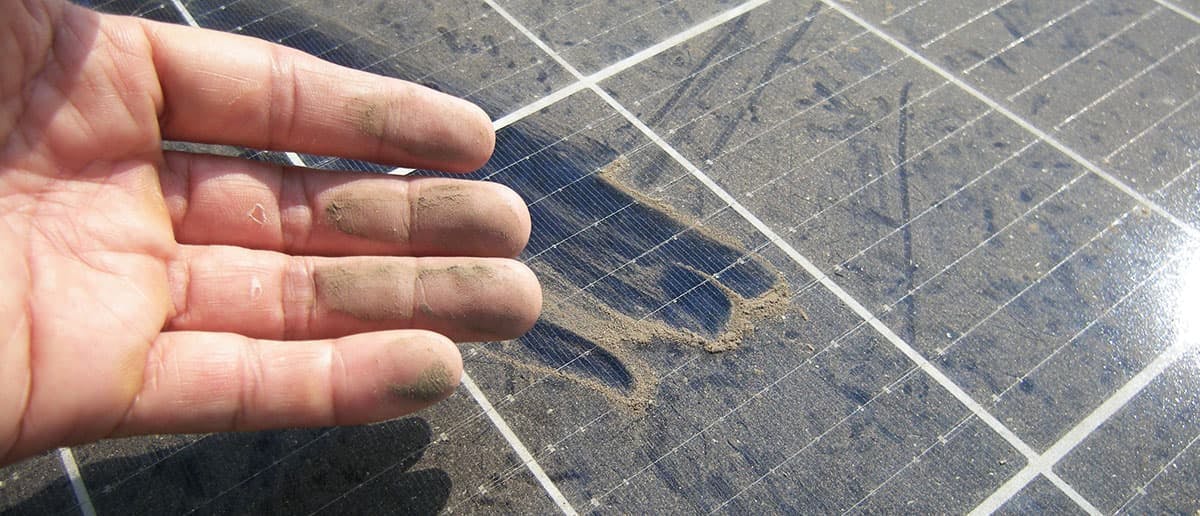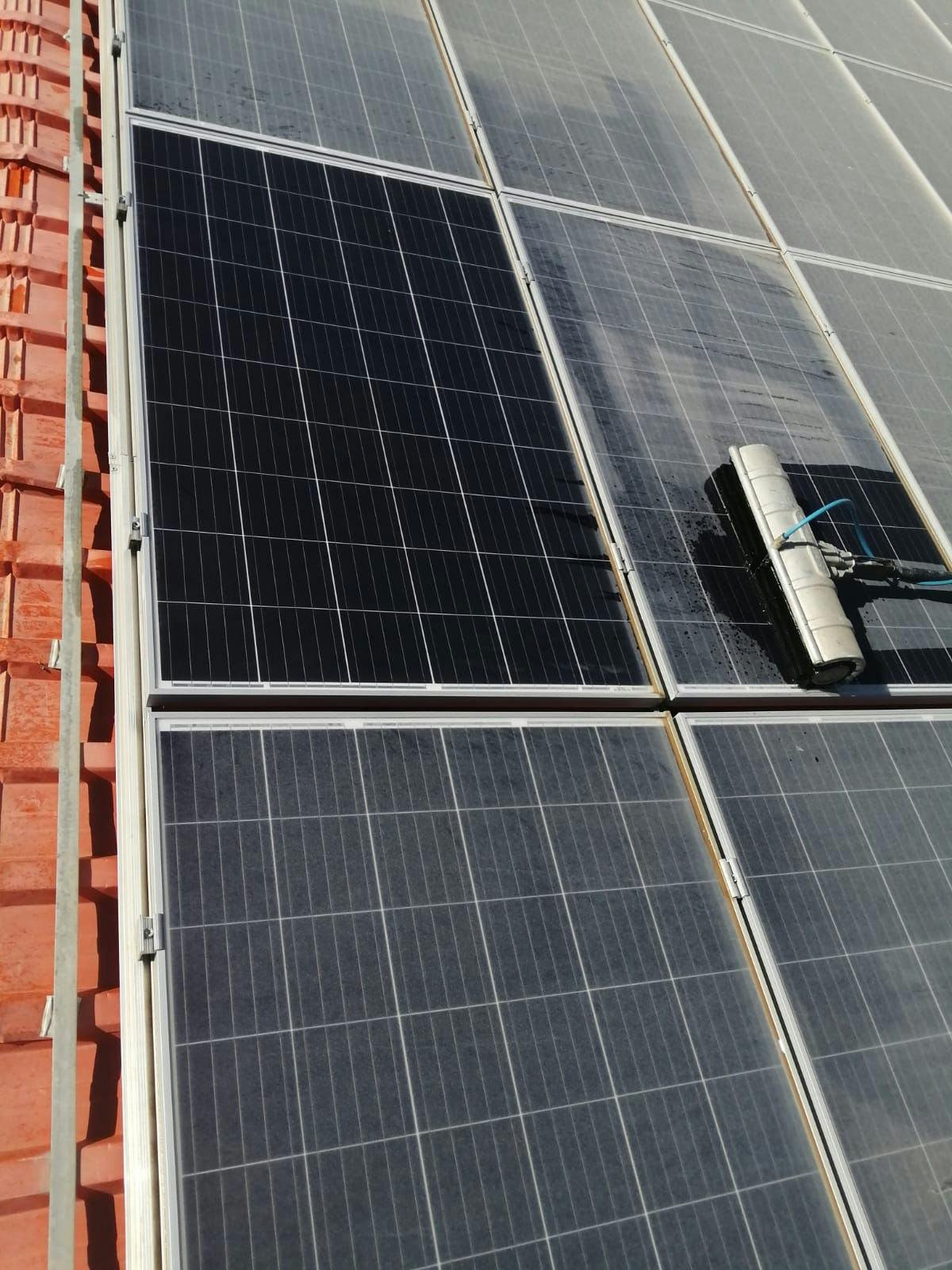R. Dr. Francisco Sá Carneiro
Zona Industrial de Bouro, Letra C
4740-010 Esposende, Portugal

How to and why clean solar panels?
The topic about cleaning solar panels is a sensitive one among solar panel owners. Some say it is absolutely necessary, while others claim that rainwater is enough to wash away any dirt the panels may have. The most correct answer lies somewhere in the middle.
Rainwater will wash away some contamination that builds up on the panels, but it is not as effective as manual cleaning. A case study was carried out in Spain, where the performance of solar panels was measured after 1 year of dust accumulation, and the average performance reduction was 4.4%. Many solar panel owners could live with this reduction, however this study also concluded that with excessive dirt accumulation, or long periods of dry weather, daily energy losses can be over 20%.
The most common problems - dirt, leaves and water
The accumulation of dirt on the panel over the years as well as its location affects the performance of the system.
A small layer of dust may not affect solar transmission, however, one should be aware of dirty rainwater that can accumulate on the underside of the panel, which can lead to serious problems and system failure.
More concerning than the dust that can accumulate on the solar panel are heavier dirt such as leaves or bird droppings. In panels with micro-inverters it can even stop the current flow due to the stain present on the solar panel.
Dust, dirt, pollen and bird droppings that accumulate on solar panels have the ability to decrease the efficiency of a solar panel. And if the solar power system is located in an area where it rarely rains, or which is particularly dusty and dirty, this decrease will be greatly extended.
Specialist solar maintenance companies recommend cleaning the system at least twice a year. This keeps the investment in excellent shape to ensure better efficiency and cost savings for the future.
How do you determine whether or not cleaning is worth it?
Rainwater is not enough to keep the panel completely clean and operating at full energy efficiency. In many cases it can even promote the accumulation of dirt at the bottom of the panel leading to the creation of serious problems like hot spots.
The presence of concentrated dirt on the module influences the production of the entire photovoltaic system and can lead to its self-destruction.
If you've had solar panels for a while you've probably noticed that energy production changes from month to month due to climate change and the changing position of the sun overhead as the seasons progress. With a little experience monitoring your solar array, you will learn how much fluctuation to expect over the course of a year. If you start to notice reduced output at a time when weather patterns seem to be on par with what you expected, dirty panels may be the main factor.
It was therefore concluded that the efficiency of solar panels will be sacrificed if they are not cleaned properly. Ideally, panels should be cleaned in a way that strikes a balance between cost, effort and potential efficiency improvements. The cost of cleaning solar panels should not be too high, and the cleaning process should not be overly complicated. The stickier the build-up, the more likely it is that suitable cleaning materials, such as a cleaning solution suitable for solar panels, will be required.

Difference between cleaned with SWP and dirt solar panel
How to Clean Solar Panels?
Cleaning solar panels, for the most part, is not that difficult, depending on how dirty your panels are. The hardest part may be not having the necessary tools to reach the entire surface area of the panel, this will depend on the dize of your system and location. This is why we recommend that firstly you assess the panels. Check them, see how much debris, dirt and substance build-up is on the panels, and what material are needed for cleaning.
If the dirt on your panels ir more than dust and includes sticky substances such as bird droppings, or sticky plant materials, then you may need to give the panels a good scrubbing. Choose a soft brush that will not scratch or damage the panels. Also, choose a cleaning solution suitable for solar panels, which does not contain any chemicals that could damage or degrade the panels.
Cleaning solutions have the ability to reduce the amount of water used and the time spent cleaning, increasing cleaning efficiency.
You can use the SWP cleaning solution, this product has been developed and certified specifically for solar modules. It is a product that will increase the efficiency of cleaning, protect the module(s) by giving it antiadherent and antistatic properties.
Be careful when cleaning not to hit the dirty surface of the panels with high pressure, it can scratch the surface of the panel which subsequently creates small shadows on the photovoltaic cells below the tempered glass, decreasing the energy production of the solar panels.
Another tip we can give you is not to use common soap for cleaning the panels. This can have leave a film or residue, which is more likely to cause dirt to stick to the panel and the chemicals in these products will attack the silicone seal and the panel structure.
Would you like to see more tips on how to clean your solar panels or other issues Do you have any suggestions or topics about the solar universe you would like to read here? Reach us by email!